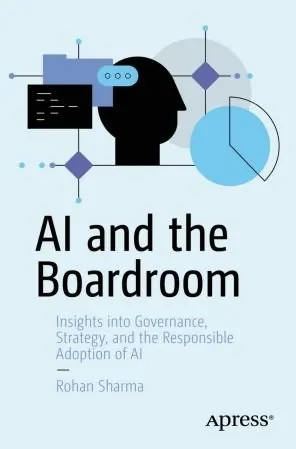
Advanced Discounted Cash Flow (DCF) Valuation Using R
- Edition: 1
- Language: English
- Publication Date: 2021-05-08
- ISBN-10: B094GRNFY2
- Sales Rank: #494552 (See Top 100 Books)
This is a book by a DCF practitioner for DCF practitioners. It is like no other. Plus, it comes packed with thousands of lines of complimentary R code.
DCF valuation is long overdue for much needed changes. This book clearly presents ‘why’ these changes are needed as well as the tools necessary to implement them.
‘Constant WACC (’value-additivity’ non-compliant)’ DCF models are ‘old school.’ Corporate finance texts, by and large, tend to hurt more than they help in this area. The circular and ‘noncircular’ DCF techniques housed within these 800+ pages offer numerous advantages over the plethora of current DCF models and approaches that make little to no sense. It is time for a ‘page turn’ in the field of finance. In this regard, the ‘accounting equation’ has a very simple but powerful story to tell, and it beckons.
Accounting Equation
‘This is my story (circa 1494).’
Asset = Liabilities + Equity
My name is Brian Lee. I am passionate about the field of finance, and I crave continual learning. Within the past 5 years, I personally attained my CFA (age 58) and CMA (age 62) professional certifications. At 63, I complete this book. Discounted cash flow (DCF) roots run deep within my soul, and valuation motivates the hell out of me. The time is now to pass the baton relative to a wealth of experience and knowledge I harbor in this vast arena.
I constantly question and insist on knowing the ‘why’ behind everything. Unfortunately, there are many unanswered ‘why’ questions in the field of finance – especially DCF valuation.
‘Why’ is the weighted average cost of capital (WACC) taught in corporate finance with only 2 terms instead of the requisite 3 terms?
‘Why’ are the ‘weights’ in the WACC equation often incorrectly taught as ‘target market weights’ or alternatively as ‘market weights?’
‘Why’ is the IRR metric taught incorrectly in most corporate finance texts? If analyzed correctly, there is never disagreement between the IRR and NPV metrics; and it has nothing to do with modified internal rate of return (MIRR). There is a major misunderstanding of what IRR fundamentally means. NPV profiles are useless tools, yet their ‘benefits’ are taught in corporate finance classes. ’Why? Note: As IRR is a topic unto itself, it is only referenced briefly in the text.
‘Why’ does practically no one calculate Economic Profit (EP) correctly?
‘Why’ do utilities incorrectly discount revenue requirements using the WACC discount rate (PVRR)?
‘Why’ do firms and the U.S. Government insist on using constant discount rates in their DCF valuations?
‘Why’ do practitioners not use required circular DCF calculations?
‘Why’ do DCF practitioners steadfastly honor the ‘accounting equation’ and completely disrespect the ‘value-additivity’ rule?
This book addresses not only the ‘how’ but also the ‘why’ behind DCF valuation. Plugging numbers into formulas without complete understanding is a recipe for disaster – especially when substantial dollars are at stake.
All 40+ DCF valuation models in this text are ‘value-additivity’ compliant. That is, they are all ‘unified’ in their results regardless of selection of the DCF model selected.
Approximately one month prior to this book’s targeted publication date, a major realization transpired in its development that dramatically and positively altered its content. Publication was delayed 3 months as a result. By pure happenstance, I discovered circular DCF valuation solutions are achievable in a noncircular manner without use of the APV model (an approximate 50 year-old valuation model that remains heavily debated to this day based on the non-unified manner in which tax shields are valued). Both circular and noncircular approaches are presented in the text that are in full agreement with one another. Unification of DCF valuation results is a major theme of the text.
Brian K. Lee, MBA, PRM, CMA, CFA







